Why is an Estuary a Valuable Resource?
The combination of freshwater and saltwater creates a unique ecosystem where a great variety of species of wildlife live (fish, reptiles, birds, and mammals like the manatee).
Healthy estuaries are essential for humans and wildlife because they:
- Promote the balance of the food chain on which all life forms depend.
- Filter the water from contaminants and sediment, which keeps the water clean for the benefit of humans and other species.
- Provide food which promotes commercial and recreational fishing.
- Protect coastal areas from flooding, rough waters, and erosion.
- Connect bodies of water for marine transport and operations.
Where is the Estuario de la Bahía de San Juan located?
This ecosystem extends through eight municipalities, from the mountains of San Juan to the coast between Toa Baja and Loíza. The estuary includes rivers and ravines that go through communities and cities and flows into beaches, lagoons, swamps, wetlands, and the San Juan bay.
Waterways That Make Up the Estuario de la Bahía de San Juan
The estuary consists of a system of rivers, canals, and lagoons that extend to the coast. On one side, the San Juan Bay connects the Caño Martín Peña with the San José Lagoon and the Los Corozos Lagoon. They connect through the Suárez Canal to the La Torrecilla Lagoon and the Piñones Lagoon. The bay also connects with the Estuarine Natural Reserve of the Laguna del Condado through the San Antonio Canal. Another important part of the estuary system is the Las Cucharillas Swamp which, along with other functions, serves as a gigantic sponge to prevent flooding.
Ecological Importance of the Estuary
The Estuario de la Bahía de San Juan is within the Estuary of National Importance category, incorporated in the National Estuary Program of the Environmental Protection Agency (EPA) since 1992. It is the only one of the 28 estuaries in the program that is located outside the continental United States and in a tropical zone.
From the mountains to the coast, the estuary basin offers refuge and food to a great number of species, including some in danger of extinction such as the leatherback sea turtle and the manatee. The Special Fund for the Estuary Law (Law 48 of 2009) includes the following species:
- 17 plants and 8 animal species in danger of extinction, such as the Antillean manatee.
- 19 species of reptiles and amphibians, such as the coquí.
- 124 species of fish, such as prochilos and sea bass.
- 300 species of wetland plants.
The eBird platform states that in San Juan, from Caimito to Ocean Park and Old San Juan, there have been 221 species of birds observed. The estuary is the habitat of at least 11 of the 17 native birds of Puerto Rico.
The ecosystems in the estuarial basin provide, among other services:
- 33% of the mangroves of Puerto Rico.
- Temporary habitat for many of the migratory birds.
- Coral reefs, sand dunes, and swamp forests that serve as a natural barrier against flooding from storms and rough waters.
- Unique Puerto Rican species and some in danger of extinction, such as the Puerto Rican boa and rosewood, in the karst forests.
- Beaches that serve as a nesting area for the largest marine turtle in the world, the leatherback sea turtle (or tinglar in Spanish).
Economic Importance of the Estuary
In addition to the enormous ecological value of the estuary, this ecosystem is fundamental to economic development and food security in Puerto Rico. The main ports where the majority of the food for the island arrives are located in the estuary. A great portion of tourist and commercial activity on the island also takes place in the estuary zone.
Each year, 80% of the products that Puerto Rico imports arrive through the ports and airports located in the Estuario de la Bahía de San Juan zone. The pier with the highest exportation value is located on the estuary, estimated at $100 million in exportations.
- The San Juan pier received 1.8 million tourists through 558 cruises based on the island or in transit, as per the official data of the 2018-2019 fiscal year. During that same time period, 4.5 million travelers came through the Luis Muñoz Marín International Airport, and the Fernando Ribas Dominicci airport in Isla Grande welcomed 19,616 passengers.
- The estuarine ecosystem serves as one of the main resources to prevent flooding in the metropolitan area of Puerto Rico.
- Commercial buildings and residences occupy 67% of the land bordering the hydrographic basin. Some of these areas include the most expensive real estate on the island, as well as commercial real estate (such as the banking area at Milla de Oro) and residential areas (Condado, Miramar, Isla Verde, Punta Las Marías, and others).
- The central offices of the majority of the Puerto Rican government agencies are located on the estuary’s land. The Palacio de Santa Catalina or La Fortaleza (Governor’s Mansion) is located in the vicinity of one of the most important entrances of saltwater in the estuary system.
- Some of the most important parks of the island are located in the estuary, including Parque Central, which includes the Paseo Lineal Enrique Martí Coll located on Caño Martín Peña, and Parque Luis Muñoz Marín and Parque Luis Muñoz Rivera parks.
- Some of Puerto Rico’s most significant monuments and historical landmarks are located in the estuary basin, including the Castillo San Felipe del Morro, Castillo San Cristóbal, and the walled city of Old San Juan.
How to Visit the Estuary
To visit the Estuario de la Bahía de San Juan, call us at (787) 725-8165, weekdays from 9:00 a.m. – 4:00 p.m.
You can also follow us on social media where we post activities for the general public.


